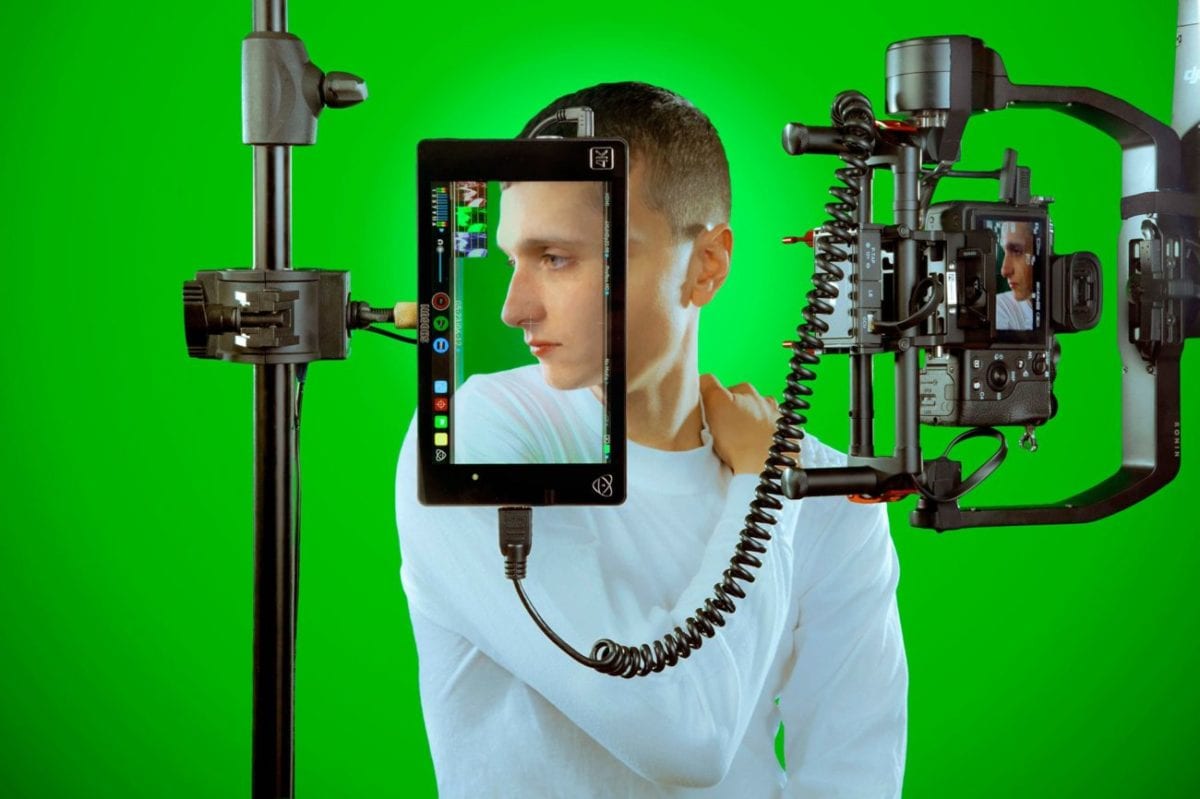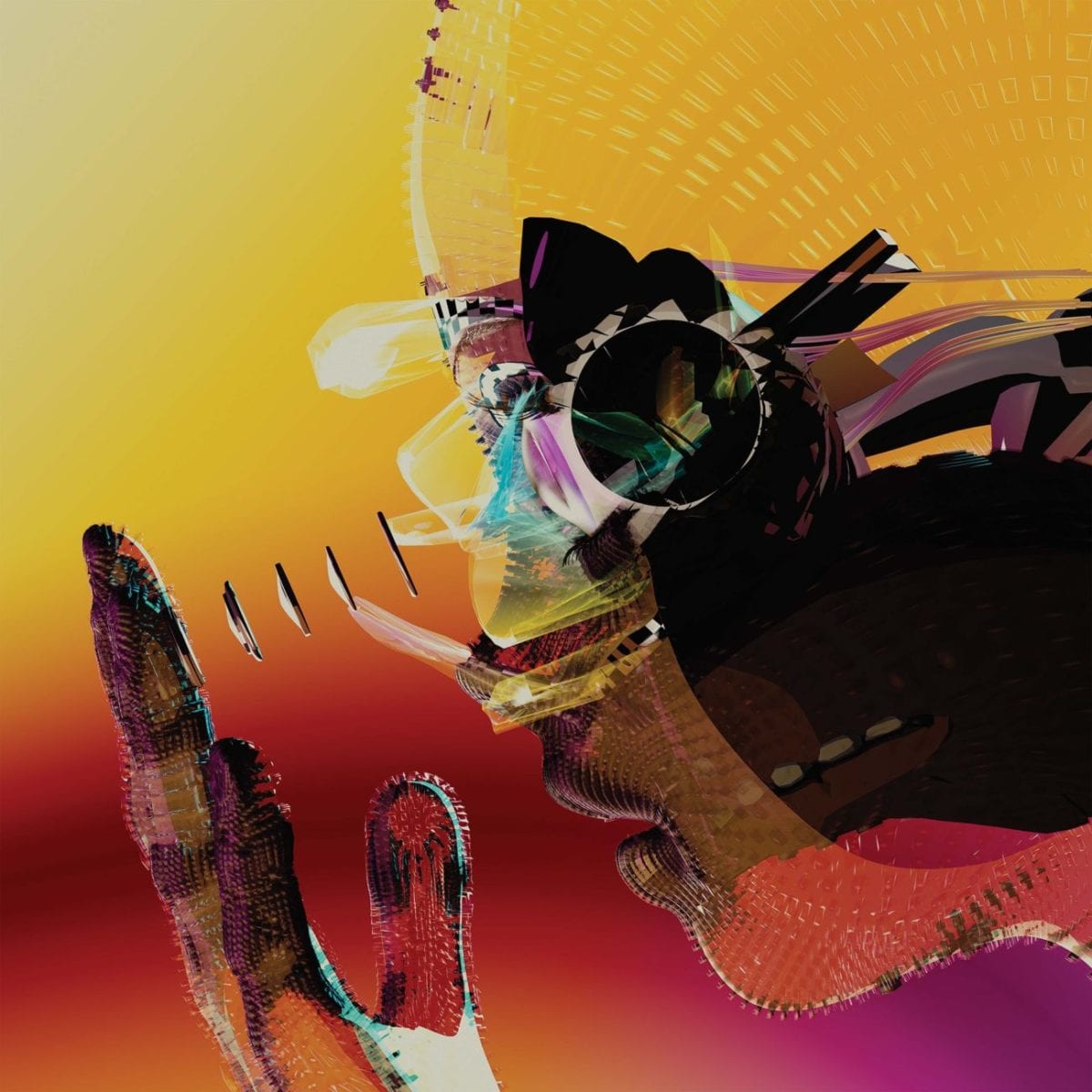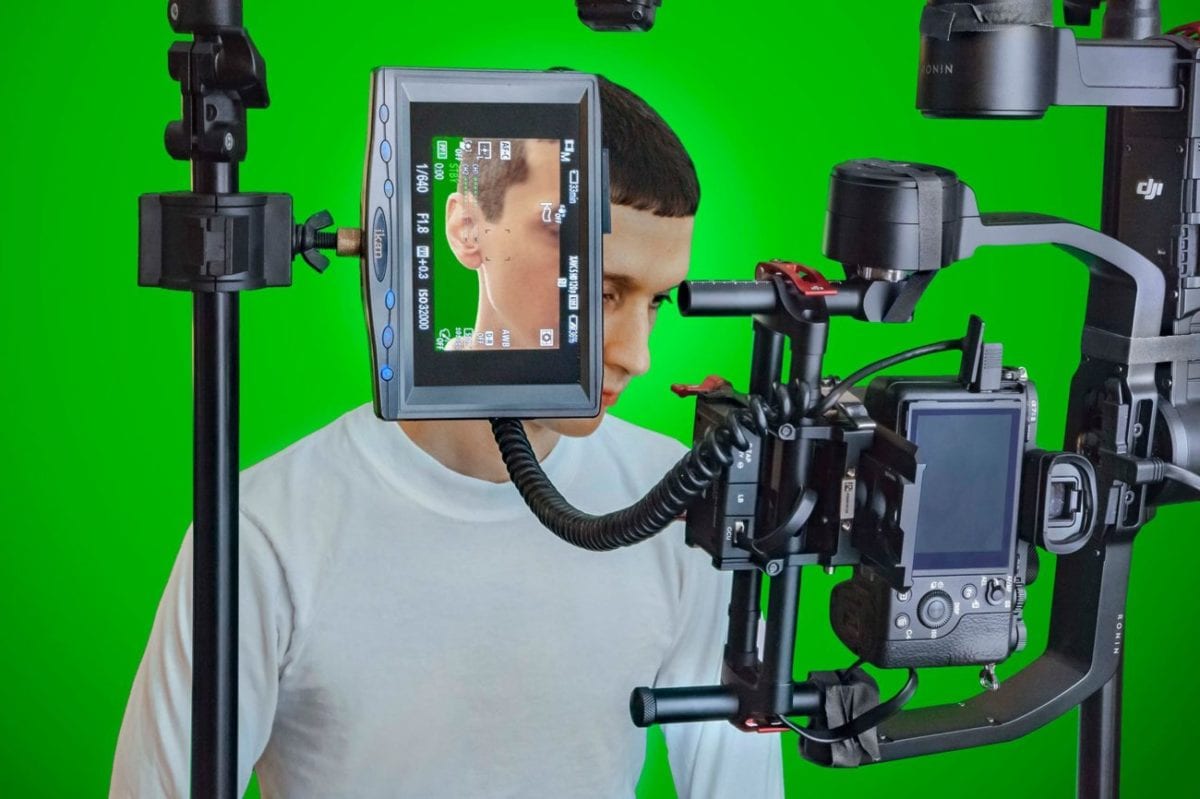
Motion Graphics is the solo project of New York based producer Joe Williams. Previously producing music under the name White Williams, Joe has also been a long time collaborator of Matthew Papich (Co La) and Beautiful Swimmers’ Max D with whom he forms the “Lifted“ project, responsible for an excellent debut album on PAN in 2015.
Following the release of his debut self-titled album (26th August 2016) via Domino Records we caught up with the producer over Skype to discover more about his album writing process and how day-to-day technology interface sounds, device notifications and even the sound of household appliances have helped shape his album.
Interviewed by Tom Durston

"A synth-pop record without sentimentality... that’s where I started it."
I wouldn’t call it a conceptual record by any means. When I started to get serious about making a record I think in whatever vague of impression in my mind was a synth-pop record, but what would it sound like now, or what is it about synth-pop that conflicts with nowadays, avoiding sentimentality and nostalgia, which is so baked into that genre.
Can you reference any albums at that time of thought?
Every synth-pop record is like that…outside of a few. If you look at music, so much of it is steeped in that kind of nostalgia and I didn’t want to do that. I wanted a reason to make a record.
I just had a point in my life where if I want to do something like make an album, there should be reasons why I am doing it. So that was the basic impression that I had. A synth-pop record without sentimentality…that’s where I started it.
At the same time, calling it conceptual is off. A lot of the stuff I didn’t notice until later. The track “Anyware” with the ring tone, I definitely was not writing songs with ring tones in my mind at the time.
It’s on my mind when I’m making it, but more in a hazier sense. Things build from that basic concept. The tracks started to figure themselves out I guess.

"I just had a point in my life where if I want to do something like make an album, there should be reasons why I am doing it."
How about the album writing process? When did you start getting into the headspace to work on it and drafting up tracks?
I had been making tracks with the name Motion Graphics since 2011 and then I worked on remixes for friends. Then I started to collaborate with Matthew Papich who produces as Co La and I worked as a co-producer on two of his records.
The first track that I worked on with Matt, we worked on for six weeks from start to finish and that’s the fastest that I have completed. That got me into finishing music and having a scope of how I can plan out a record from the diligence that would come with working with other people.
In those six weeks we went through a lot of the songs really quickly, in an unfinished way, it was with my help with him that these songs got figured out, so it went through a lot of different creative hurdles. I see that as a moment for helping me focus… so to speak.
To add to that I was living in Baltimore and I worked on this soundtrack for this feature called “12 O’Clock Boys” and that was the same kind of inspiration. It was a big project in a small amount of time so I feel like those two things, working with on “Moody Coup”, and the soundtrack made working on a record a lot simpler.
I wrote half the film as original music and the other half is by music from other musicians from Baltimore City. If there was a scene where the score wouldn’t work with original music, I had to find music to fit that scene. It was me and the director that was it. So it was a big responsibility.
Then when it came to making my first solo record it made focussing on it seem a lot more obtainable.
So is making an album harder than directing score for a film?
I’m not saying it is easier; it narrowed my scope and put me onto things on how I can make a solo record.
"Taking parts of myself out of the authorship is important to this project."
The album artwork and lead single music video represent artificial intelligence – the machine taking over the role of the human to create music, perhaps a statement against the algorithm?
It’s not a statement against the algorithm…I wouldn’t go that far. I find inspiration in when I write pattern into a computer and it can have a hand in the writing process. It could be like something that I have sequenced. Taking parts of myself out of the authorship is important to this project.
There are different things on the record, the last track ‘SoftBank Arcade (Swiftcode Version)’ is a sample of this free jazz drumming, so all I had was that sample and then I used this Max for Live device to take the audio from the microphone and generate midi notes so you could tap out melodies…using the laptop microphone.
You could also send out any audio signal to it. So I used that sample of that jazz drumming to generate midi notes, so all the music and melody from that track is sequenced every time a drummer hits a tom or a crash, every peak, impulse of that drummer. So the drumming translates each midi note. I’m trying to get these devices to have a hand in the writing process.
On “Airdrop” and other tracks the sequencing is so rapid, the arpeggiators that are off any type of quantizing, so they are not synchronised to the tempo and so they have a free rate, which is modulated. This is not a new technique; you can hear this in Autechre or Mark Fell. This is where I find a reason to make a track, a starting point to finishing music.
Did you use any analogue gear outside of the computer?
No, nothing. When I was younger I went through all of that. I still love synthesizers, I spent a long time of my life working with them and programming them but it felt like just by working with a computer it gave me a lot of focus to give a lot of context to what kind of record I was making and narrowing my scope for what is possible with the song writing.
Analogue synths I find is part of that nostalgia we talked about earlier, coveted, fetishized, expensive instruments and there is so much that is baked into that, it was something I wanted to avoid.

"Analogue synths I find is part of that nostalgia we talked about earlier, coveted, fetishized, expensive instruments and there is so much that is baked into that, it was something I wanted to avoid."
It says in the press release that you reference Japanese techno pop, jazz sounds of ECM Records – What else were you listening to?
I wouldn’t say there are particular records, but I love Ryuichi Sakomoto he is a huge influence to me, his work as a producer as well. There is also Yasuaki Shimizu, Mariah those records are some of my favourite music. From the jazz standpoint Yasuaki Shimizu is obviously a great saxophone player, which had an influence on the record. John Hassell’s trumpet playing and John Lurie’s saxophone playing is also a big influence.
How did you discover these producers?
I grew up listening to punk and going to local DIY type shows. I was really into buying records back then. I know that a lot of people have that story in America at least, people started out in local DIY scenes with aggressive music. Now, so many of these people you see make dance music, they all started out in a similar space.

"I saw a friend of mine perform solely with a laptop and I thought that was really intriguing. I didn't understand it; I didn't know that you could make music on a computer."
When did you start experimenting with electronic music?
I started making music on my parents PC when I was seventeen. I think it was a Gateway PC. I was playing drums in a hardcore band and I remember wanting to use a laptop in the band. Then I saw a friend of mine perform solely with a laptop and I thought that was really intriguing. I didn’t understand it; I didn’t know that you could make music on a computer.
I had a Boss Sp-202 sampler at that time so that was my first instrument. At the time, I was trying to figure out how to trigger samples while playing drums live. This was before I was into the idea of using a laptop. I think that playing around with the sampler was the beginning of me creating solo music. But then once I started to make music on the computer it really changed my taste. I went from buying random hardcore records from Eastern Europe to being really into Rephlex, Tigerbeat6 and Squarepusher.
There were a few people in my small town that did the same thing. I also met my friend Gregg Gillis back then, he now makes music under the name ‘Girl Talk’. Back then his music was super experimental and nobody would understand, it was full on plunderphonics. We would play shows around Cleveland. I remember less than 10 people were interested in music like that and we were all friends in one way or another.

"I feel like I make music in the same way as when I was seventeen. There is something nice about that; it gives me some sort of comfort."
How did you first all meet then?
I saw my friend, who is now my best friend, open up for EC8OR and he played on an iMac, the egg shaped iMac, which is translucent. He was wearing a watch and would hold his wrist up to the microphone and the watch would tell you the time in Japanese, he would then go back to his seat and play some weird music.
The watch was so funny and I had never seen anyone play live with a laptop, so I had to meet him. He was in Cleveland for his first year of art school, so he introduced me to Gregg and other people like that. So around then I shifted being involved in punk/hardcore music to making my own music.
I’ve probably used every piece of software; Fruity Loops, Acid Tracks, Logic et al. I feel like I make music in the same way as when I was seventeen. There is something nice about that; it gives me some sort of comfort.
You also work in a UX role – tell me about that?
Yeah I do sound design and recording. For one of my jobs I work at The Morgan Library Museum in Manhattan and record dialogue audio of curators that are announcing upcoming shows at the museum. Another job I have is designing UI and UX sounds for a touch screen device. When it turns on and powers off, if something goes right or wrong, there are sounds for all of these moments.
Let’s talk about Domino Records – how do you feel your music fits in with their catalogue?
I think I am still figuring that out. They are really supportive and I think that what I want to do is not always very cooperative, from what a record label would expect me to do. They are really supportive and make things happen. Even the basics like getting studio time, Lawrence (Domino Records founder) is amazing and is super supportive of this record.
I am sure that there is something that ties the labels roster together but it is not an aesthetic. There is just such a wide variety of music that Domino release. The way that they treat artists is what stands out to me. I think that my album is on its own trajectory, but I think they are open-minded.

"My music is not really tied to New York or really any place or a city. It is more about these daily experiences, being in front of a computer, it’s operating around something that is really common."
Do you work or hang out with many of your US based contemporaries such as Oneohtrix Point Never?
My music is not really tied to New York or really any place or a city. It is more about these daily experiences, being in front of a computer, it’s operating around something that is really common.
I draw inspiration from Yellow Magic Orchestra, I see their music as international, and I think there are layers of that in my record. Kraftwerk is like that; their music is about Germany but is also about industry so it speaks internationally. I think that’s interesting
Let’s talk more about these daily appliances and notifications. Can you be more specific?
There are these foley elements that appear in the record, they replace what would normally be a percussion sound or kick drum, I see impressions of those sounds in the record. Nowadays, our furniture and appliances have their own identities that are personified by sound.
I see a connection here to the idea of “Furniture Music” which was a term created by Erik Satie. His music is a big influence on the record and its in this way that I see the Motion Graphics LP as Ambient music. I always go back to ambient music. It’s music that isn’t set in time, it doesn’t age, and it plays differently in different spaces.
What records have you recently purchased?
Ihor Tsymbrovsky – Come Angel [Offen Music]
I received this Ihor Tsymbrovsky record in the mail from Growing Bin Records. It was a cassette only release from 96′. The tape was reissued by the amazing label Offen, out of Dusseldorf.
Super beautiful minimal jazz piano and organ with falsetto singing with a touch of delay. You can hear the keys of the organ clacking which is one of my favourite sounds in music.
I recently used this track on a mix for Blowing Up the Workshop.
BNE / Diet RX – 369 001 [369 Us]
My good friend Alex Dondero started 369 Records. He has owned a printmaking studio in Brooklyn for over 5 years and this record label extends their craft into record making.
All the sleeves and jackets are screen-printed individually by hand! Love the BNE side. The synth bass is super focused. Many more great 12’s coming from this label.
Deux Filles- Silence & Wisdom / Double Happiness [Dark Entries]
Bought this reissue, also from Growing Bin, easily my favourite mail-order site around. Always wanted to buy Silence and Wisdom on vinyl but was way too pricey.
Luckily it was scooped up by Dark Entries and reissued at a normal price. We’re definitely living in a golden age of reissues in 2016. Deux Filles is an alias of the band Jeremy’s Secret.
I used the self-titled track “Silence and Wisdom” at the end of my Brass Mechanics mix. It’s an insane 4:00 AM studio freak-out session with saxophone, piano and a faint adornment of whispering.
Motion Graphics album is out now on Domino Records, download the album now via iTunes.
Artwork by Culture Sport.
TRACKLIST
1. Lense
2. Airdrop
3. Houzzfunction
4. Anyware
5. Minecraft Mosaic
6. Vistabrick
7. City Links
8. Forecast
9. Mezzotint Gliss
10. Softbank Arcade (Swiftcode Version)
Discover more about Motion Graphics and Domino Records on Inverted Audio.
Motion GraphicsDomino Records26 August 2016AmbientElectronicSynth Pop